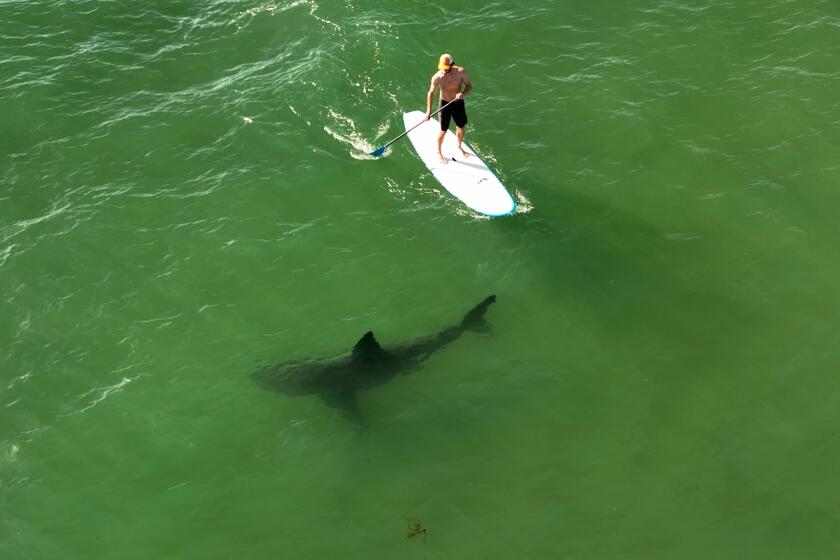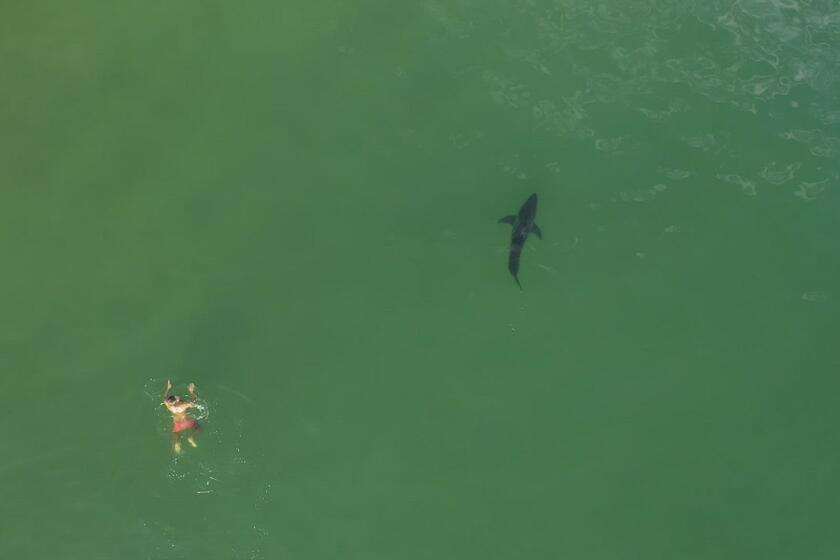Attention beachgoers: Everything you think you know about sharks is probably wrong
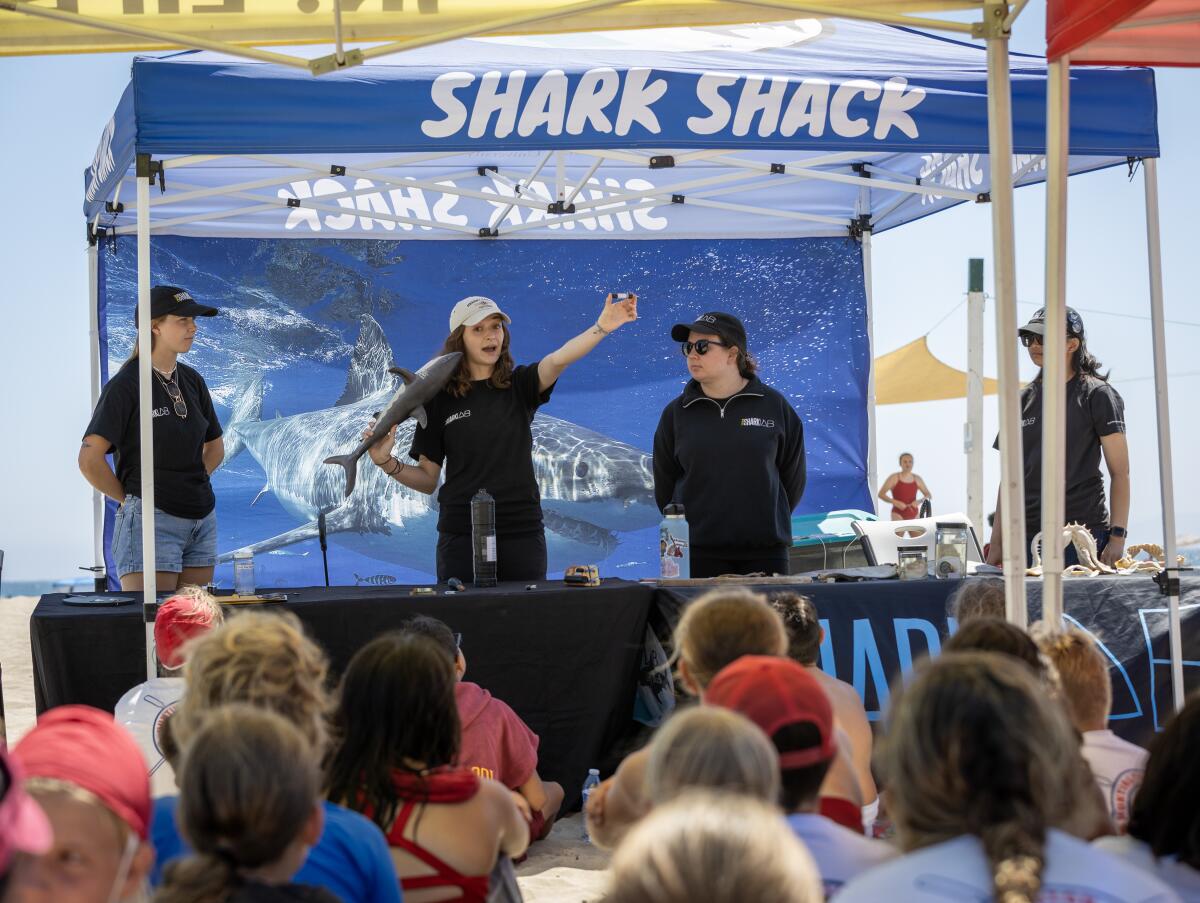
- Share via
It’s a hot day at a Santa Monica beach, and the children splashing each other aren’t the only youngsters in the water. Somewhere not far from the shore swims a group of five or more juvenile white sharks.
Over the last decade, scientists have come to understand that the fearsome fish are far more common in Southern California waters than previously realized. Any 3-mile stretch of coastline between Santa Barbara and San Diego likely contains around 40 or so young sharks within half a mile of the beach, said marine biologist Chris Lowe, director of the Shark Lab at Cal State Long Beach.
And although scientists are now seeing more than three times as many sharks here than they did 15 years ago, cases of sharks biting humans have held steady, ranging between one and five nonfatal injuries per year, Lowe said.
Over the last two decades, the total number of fatal attacks in Southern California waters is just four, according to the California Department of Fish and Wildlife.
“Sharks are not out to get us,” said Kayla Cheney, a CSULB undergraduate who is trying to give the predators an image makeover.
That’s why she spent a recent Sunday in a Shark Shack at the Heal the Bay Aquarium under the Santa Monica Pier. Along with four other volunteers, she uses plastic toys to teach kids about shark anatomy and a real shark jaw to give them an inside look of the size and function of their mouths.
“Did you know sharks can lose over 30,000 teeth throughout their life?” Naya Shah, another CSULB undergrad, told a young girl whose eyes widened in fascination.
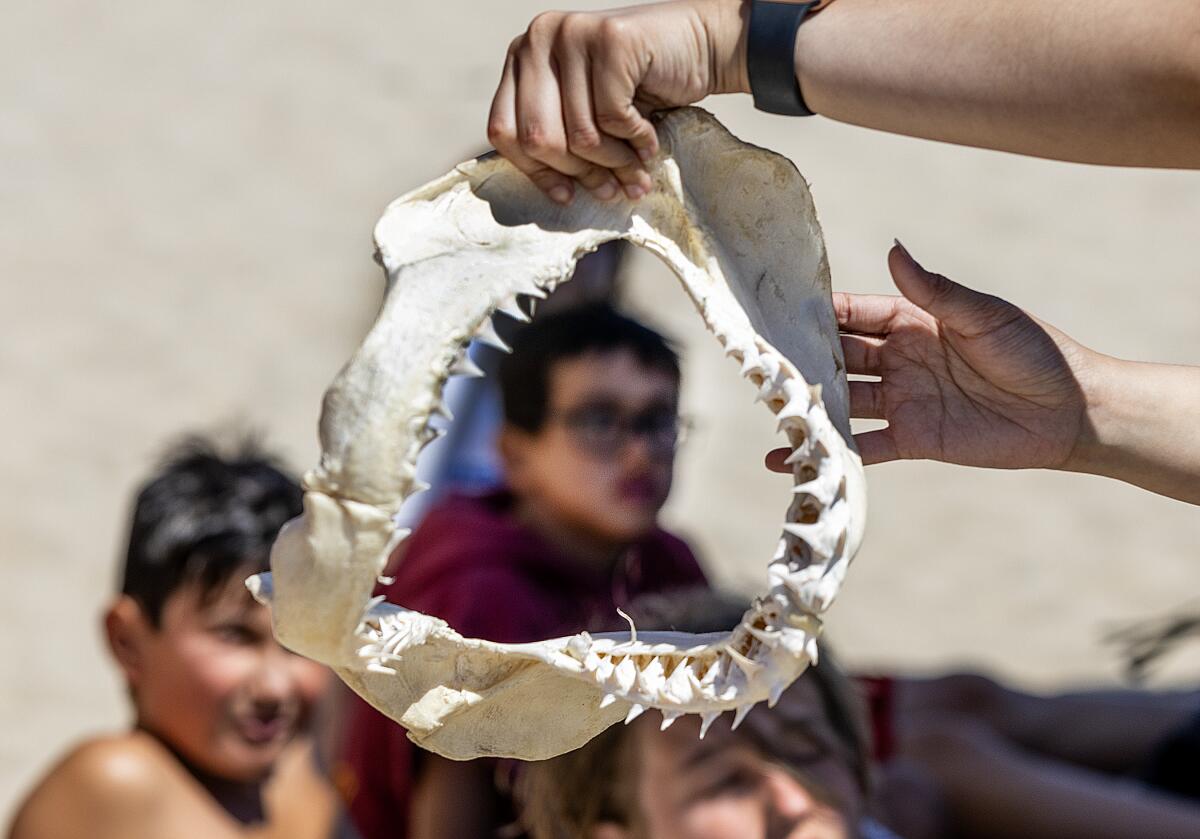
Lowe launched the Shark Shack in 2018. During the summer, the pop-up public education booth makes anywhere from five to eight appearances each month at museums, aquariums and beaches from Malibu to San Diego.
If you have swum in the ocean off the coast of Santa Barbara or San Diego recently, chances are you swam next to a young great white shark.
The primary goal is to help people understand that Hollywood’s portrayal of sharks has little basis in reality. Unlike in “Jaws,” they don’t chomp on boats in the water, taking down a whole crew. Despite the prowling behavior seen in “47 Meters Down,” sharks don’t actively hunt for humans and almost always keep to themselves. And you can forget about the two days Blake Lively spends dodging a shark in “The Shallows” because a real one wouldn’t invest much time stalking a single piece of potential prey.
In reality, sharks help keep ocean ecosystems balanced and resilient by regulating fish populations and stabilizing the underwater food web.
“We don’t usually appreciate the vital role [sharks] play in healthy ocean systems,” said Barbara Quimby, a researcher at Hawaii Pacific University who studies how humans interact with the oceans.
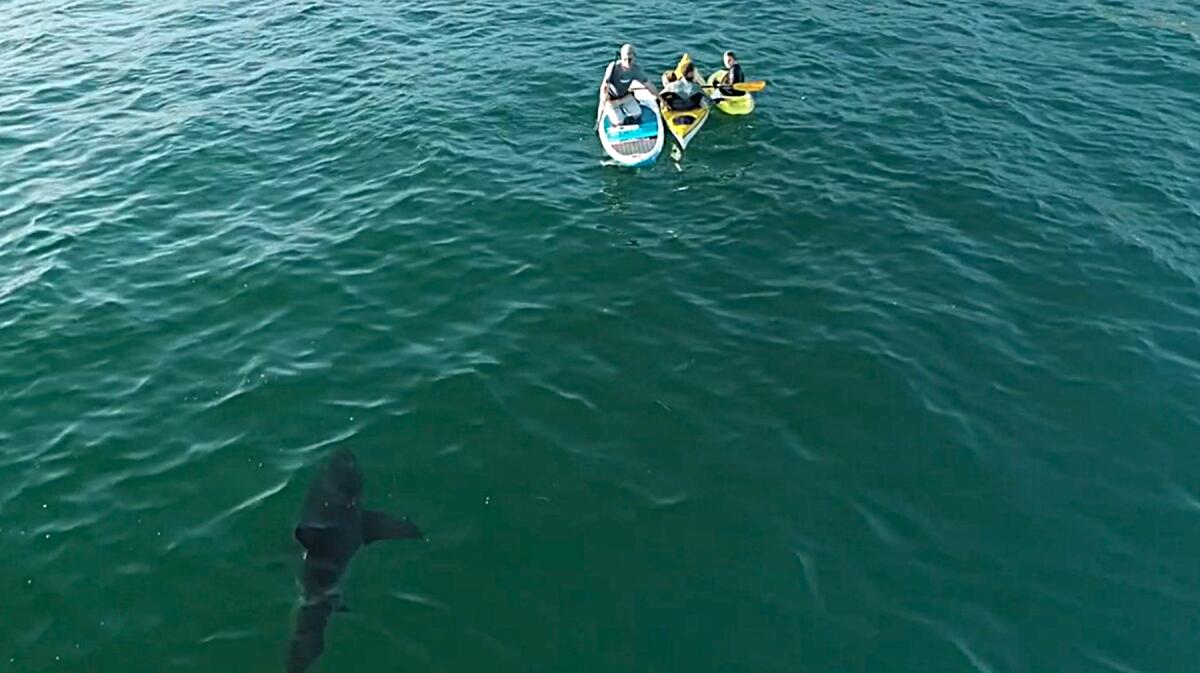
The inspiration for the Shark Shack came from students taking a Cal State Long Beach public relations class in 2018, Lowe said. He had challenged the class to devise a project that promoted the Shark Lab’s research, and one group proposed a mobile shark education booth. The rest was history, Lowe said.
It was back in 2012 that Lowe started to notice an increase in the number of juvenile sharks in coastal waters. Climate change is the likely explanation, since it has extended the range of warmer waters further north, he said.
Adult sharks live in the open ocean — far away from beachgoers — but scientists believe newborn sharks swim toward the shore shortly after birth. The shallower, warmer waters provide a haven where they won’t have to compete with adults for large prey, such as elephant seals.
Those waters also provide an abundance of easy pickings for amateur hunters. Juvenile sharks eat animals that live on the sea floor, such as crabs, squid, small fish, bat rays and stingrays — all of which are easy to find near the shore.
This Malibu photographer captures images of great white sharks along the Southern California coast, many just feet from unknowing swimmers and surfers.
The fact that young sharks eat stingrays is a boon to humans since stingrays — unlike sharks — are actually dangerous. Lowe estimates that Southern California swimmers endure about 10,000 painful stings a year. For the sake of comparison, the number of shark attacks statewide last year was four, none of which were fatal, according to the Florida Museum of Natural History’s International Shark Attack File, which keeps records of human-shark interactions.
“Most people are worried about the juvenile white sharks swimming along the coastline, when really they should be worried about the stingrays hiding in plain sight,” said Anthony McGinnis, a CSULB undergraduate and Shark Shack volunteer. “A lot of adults aren’t aware of the need for the stingray shuffle.”
The stingray shuffle consists of shuffling your feet instead of picking them up as you walk through the water. The vibrations scare off the stingrays, prompting them to swim away without whipping their barbed tails to deliver a dose of venom.
Shark Shack volunteers have found that people are receptive to learning about marine life while they’re at the beach since the knowledge is directly and immediately relevant to them. A typical day can involve speaking with 200 to 1,000 visitors, who often say they feel a sense of relief once they understand what’s going on in the water around them.
That doesn’t surprise Gina Clementi, a marine ecologist at Florida International University.
“The more we know about the sharks and stingrays and how to react if we do encounter them, the better we can minimize negative interactions and improve public perception of these ‘scary’ marine predators,” she said.
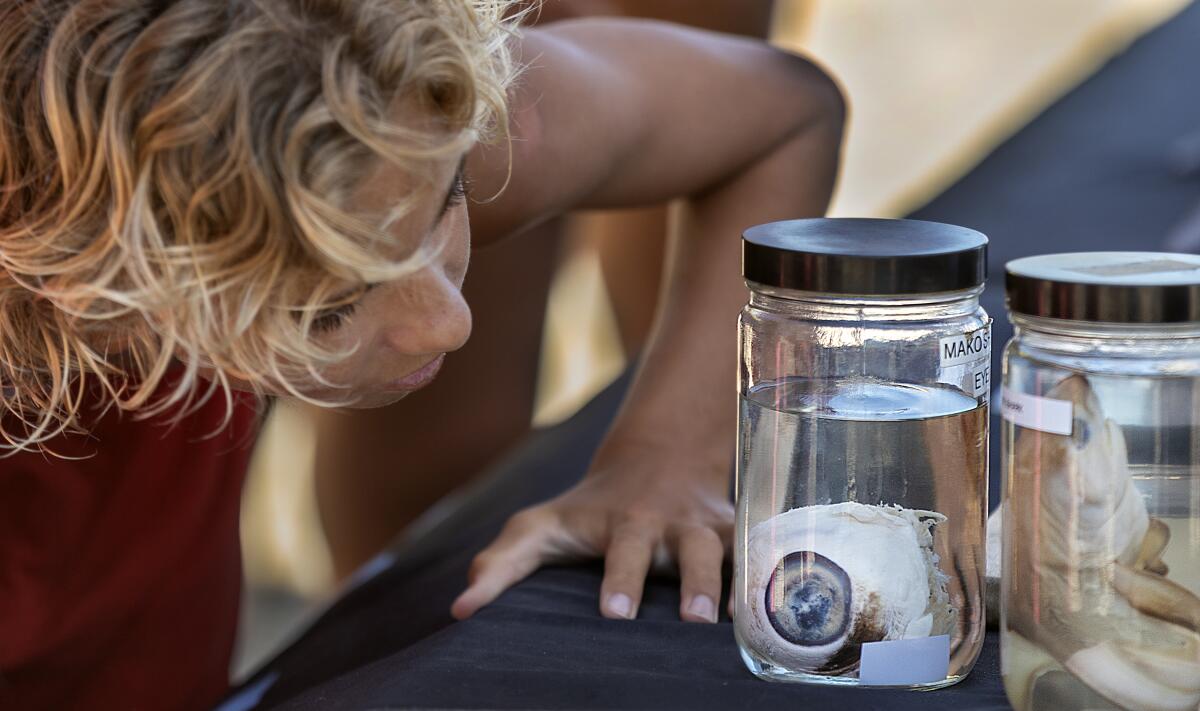
Shark Lab researchers are developing a survey to assess whether the Shark Shack is succeeding in changing visitors’ views about these misunderstood creatures, Lowe said. The results will help them improve their education strategies and reach more people.
In addition, the Shark Lab has developed a series of comic books in both English and Spanish to educate children about ocean safety and protecting marine life.
“Communities that enjoy the benefits of living by the ocean need to increase our awareness of how to respect and safely interact with sharks in our shared coastal waters,” Quimby said.
